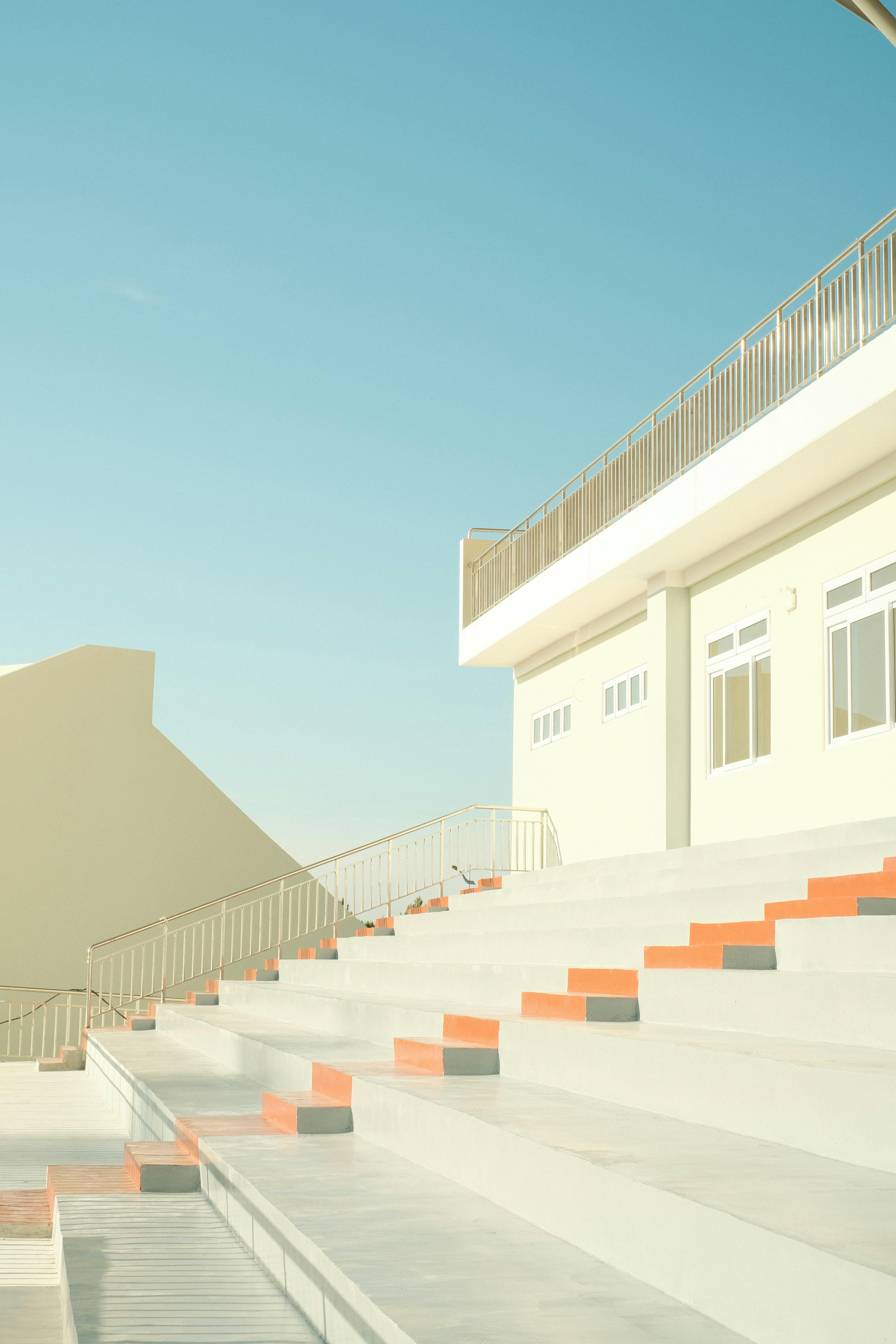Is your PC feeling sluggish and unresponsive? You’re not alone! Many users are experiencing Windows 11 RAM overload issues that can severely impact performance. In this article, we’ll explore effective Windows 11 RAM overload fixes to help you unlock your PC’s true performance. As we dive into these solutions, you’ll discover how to optimize your system and reclaim the speed you once enjoyed.
As technology continues to advance, it’s crucial to stay updated with the latest Windows 11 RAM overload fixes for 2025. Whether you’re gaming, multitasking, or simply browsing, excessive RAM usage can lead to frustrating lag and slowdowns. But don’t worry! We’ve got your back. From adjusting your settings to utilizing built-in tools, there are several methods you can implement right now to enhance your device’s efficiency. Are you ready to unleash the full potential of your machine?
In this comprehensive guide, we’ll cover a variety of techniques that can help mitigate the effects of RAM overload in Windows 11. You’ll learn about memory management strategies and the latest software solutions that can prevent your system from becoming bogged down. Don’t let RAM overload hold you back any longer! Read on to discover how to optimize your Windows 11 experience, ensuring that your PC runs smoother and faster than ever before. Say goodbye to sluggishness and hello to peak performance!
Top 7 Proven Techniques to Resolve Windows 11 RAM Overload Issues and Boost Performance in 2025

Windows 11 has been gaining popularity since its release, but users often face annoying RAM overload issues that can slow down their systems. In this article, we will explore the top 7 proven techniques to resolve Windows 11 RAM overload issues and boost performance in 2025. These fixes can unlock your PC’s true performance and are essential for anyone who works or plays on a Windows 11 machine.
1. Check for Memory-Intensive Applications
Sometimes, certain apps can hog your RAM without you realizing it. It’s important to monitor which applications use the most memory. You can do this by:
- Pressing Ctrl + Shift + Esc to open Task Manager.
- Go to the “Processes” tab and sort by “Memory.”
Identifying these apps can help you decide which ones to close or uninstall.
2. Disable Startup Programs
Many programs start automatically when you turn on your computer, which can contribute to RAM overload. Disabling unnecessary startup programs can free up RAM. Here’s how you can do it:
- Open Task Manager.
- Navigate to the “Startup” tab.
- Right-click on the programs you don’t need and select “Disable.”
This small change can lead to a noticeable performance boost.
3. Increase Virtual Memory
Windows uses a portion of your hard drive as virtual memory when RAM is full. You can adjust this setting to improve performance. To do this:
- Right-click on “This PC” and select “Properties.”
- Click on “Advanced system settings.”
- In the Performance section, click “Settings.”
- Go to the Advanced tab and click “Change” under Virtual Memory.
Make sure to set it higher than the current value, but keep in mind the available disk space.
4. Run Windows Memory Diagnostic
If you suspect that hardware issues could be causing RAM overload, running the Windows Memory Diagnostic tool can help. It checks for memory problems and provides solutions. You can access it by typing “Windows Memory Diagnostic” in the search bar and following the prompts.
5. Manage Browser Tabs
Web browsers can consume significant amounts of RAM, especially when multiple tabs are open. Here’s a few tips to manage browser RAM usage:
- Limit the number of open tabs.
- Use extensions like The Great Suspender that can suspend inactive tabs.
- Regularly clear your browser’s cache and cookies.
These steps can lead to a smoother browsing experience.
6. Update Drivers and Windows
Having outdated drivers or Windows can also lead to performance issues. Regular updates improve stability and performance. To check for updates:
- Go to Settings > Update & Security > Windows Update.
- Click “Check for updates.”
Keeping everything up to date can prevent many problems.
7. Optimize Windows for Performance
Windows 11 has built-in features that can optimize performance. You can adjust performance settings by:
- Right-clicking “This PC” and selecting “Properties.”
- Clicking on “Advanced system settings.”
- In the Performance section, click “Settings.”
- Select “Adjust for best performance.”
This will disable unnecessary visual effects that can slow down your system.
RAM overload issues on Windows 11 don’t have to be a permanent problem. By implementing these techniques, you can improve your system’s performance in 2025 and unlock its true potential. With a little effort, your computer can run smoother, allowing you to enjoy a seamless experience whether you are working, gaming, or streaming. By taking control of your RAM usage, you’re not just fixing a problem; you’re enhancing your entire computing experience.
Is Your Windows 11 Slow? Here’s How to Fix RAM Overload and Maximize Speed in Just 5 Steps

Is your Windows 11 slow? You’re not alone! Many users find their PCs sluggish after upgrading, and it’s often due to RAM overload. RAM, which stands for Random Access Memory, is crucial for your computer’s performance. When it’s overloaded, it can cause your system to drag, making even simple tasks feel like a chore. Here’s how to fix RAM overload and maximize speed in just 5 steps. Let’s dive in!
Step 1: Check Your RAM Usage
First, you need to know how much RAM is actually being used. Windows 11 provides a built-in tool that allows you to monitor this. You can open the Task Manager by right-clicking on the taskbar and selecting “Task Manager.” Once it’s open, click on the “Performance” tab. Here you will see the RAM usage. If it’s consistently above 80%, that’s a sign it’s overloaded.
Step 2: Close Unnecessary Applications
If your RAM usage is high, take a look at the applications running in the background. Many applications can automatically start when you boot up your computer, consuming precious memory. You can close them directly from the Task Manager. Just right-click on the application you don’t need and choose “End Task.” This simple act can free up significant RAM space and speed up your system.
Step 3: Disable Startup Programs
Some programs automatically start when your computer boots. Disabling these can greatly improve your startup speed and overall performance. In the Task Manager, go to the “Startup” tab, where you’ll see a list of programs. Right-click on any that you don’t need right away and select “Disable.” This will prevent them from using RAM at startup.
Step 4: Upgrade Your RAM
If you find that you’re always running out of RAM, it might be time for a hardware upgrade. Most computers allow for additional RAM to be installed easily. Depending on your system, you can increase your RAM capacity. For example, if you currently have 8GB, upgrading to 16GB could make a significant difference. It’s like giving your computer a breath of fresh air!
Step 5: Use a RAM Cleaner Tool
Lastly, consider using a RAM cleaner tool. These tools can help free up RAM by clearing unnecessary data and optimizing your system. There are several programs available, such as CCleaner or Wise Memory Optimizer. These tools can automatically manage your RAM usage, making it easier to keep your computer running smoothly. Just make sure to read reviews and choose one that’s reputable.
Benefits of Fixing RAM Overload
- Faster Performance: By managing your RAM, you can experience faster load times for applications and smoother multitasking.
- Improved System Stability: A system with adequate RAM is less likely to crash or freeze.
- Enhanced Gaming Experience: For gamers, optimizing RAM can lead to a more enjoyable experience with higher frame rates and quicker load times.
- Better Productivity: When your computer runs efficiently, you’ll get your work done faster, which means more time for other things.
In 2025, as technology continues evolving, it’s crucial to know how to maintain your computer’s performance efficiently. Following these steps can help you unlock your PC’s true performance and ensure that you’re getting the most out of your Windows 11 experience. No one likes a slow computer, so make sure to take action! By keeping your RAM in check, you’ll enjoy a smoother, faster computing experience.
The Ultimate Guide to Diagnosing and Fixing RAM Overload in Windows 11: 2025 Edition

Are you struggling with RAM overload on your Windows 11 system? You’re not alone! Many users in New York and around the world are facing this issue. The good news is that you can diagnose and fix these problems to unlock your PC’s true performance, especially in 2025. This guide will take you through practical steps to tackle RAM overload effectively.
Understanding RAM Overload in Windows 11
RAM, or Random Access Memory, is a critical component that affects how swiftly your computer can operate. When RAM gets overloaded, you might notice that your PC becomes sluggish. According to studies, Windows 11 uses memory differently compared to its predecessors. This can lead to higher RAM consumption, especially if multiple applications are running simultaneously.
Here are some common signs of RAM overload:
- Slow application responses
- Frequent crashes or freezes
- High memory usage in Task Manager
- Difficulty in multitasking
Diagnosing RAM Overload Issues
To fix RAM overload, first, you need to diagnose the problem. You can do this by using built-in tools in Windows 11. Here are steps to follow:
- Press Ctrl + Shift + Esc to open Task Manager.
- Click on the Performance tab to view memory usage.
- Look for which applications are consuming the most RAM.
If you’re noticing that specific programs are using excessive memory, it may be worth looking into those first.
Windows 11 RAM Overload Fixes: Effective Solutions
Once you’ve diagnosed the problem, it’s time to take action. Here are several fixes to consider:
-
Close Unnecessary Programs: Close any applications that you aren’t actively using. This can free up valuable RAM.
-
Disable Startup Programs: Some applications automatically start when your PC boots. You can disable these in Task Manager under the Startup tab.
-
Increase Virtual Memory: Virtual memory acts as additional RAM. To increase it, go to System Properties > Advanced > Performance Settings > Advanced > Virtual Memory.
-
Upgrade RAM: If your PC regularly suffers from RAM overload, it might be time to invest in more RAM. Most Windows 11 devices allow for RAM upgrades.
Optimize Your System for Better Performance
Beyond individual fixes, there are broader optimization strategies you can implement:
-
Regular Updates: Ensure Windows is updated. Updates often include performance improvements.
-
Disk Cleanup: Use the built-in Disk Cleanup tool to remove unnecessary files. This can help improve overall system performance.
-
Check for Malware: Malware can consume system resources. Regular scans can prevent these issues.
Comparing RAM Usage Across Applications
To better understand how different applications affect your RAM, here’s a quick comparison:
| Application Type | Average RAM Usage |
|---|---|
| Web Browsers | 200MB – 2GB |
| Video Editing Software | 4GB – 8GB |
| Games | 4GB – 16GB |
This table can help you gauge what’s normal and what’s excessive, guiding your efforts in managing RAM overload.
Practical Examples of Fixing RAM Overload
Consider this scenario: You’re editing a video and your PC suddenly slows down. By checking Task Manager, you find your editing software is using 8GB of RAM. Closing unused browser tabs and disabling unnecessary startup programs can help. If the problem persists, you may need to consider upgrading your RAM.
By following this ultimate guide, you can tackle RAM overload issues effectively and keep your Windows 11 system running smoothly. Remember, keeping an eye on your RAM usage can help prevent future overloads and ensure you get the most from your PC. Regular maintenance and vigilant monitoring, in the long run, will keep your computer performing at its best.
Why Windows 11 Users Are Struggling with RAM Overload: Key Fixes You Need to Know for 2025

Windows 11 is a powerful operating system, but many users in New York are finding themselves facing unexpected RAM overload issues. This can lead to frustrating slowdowns and subpar performance. As we head into 2025, understanding why this happens and how you can fix it becomes crucial for unlocking your PC’s true performance. Here’s a look at the reasons behind RAM overload in Windows 11 and some key fixes you simply need to know.
Understanding RAM Overload in Windows 11
RAM, or Random Access Memory, is essential for your computer’s performance. It temporarily stores the data your computer is currently using, allowing for quick access. However, Windows 11 has introduced new features and enhancements that can sometimes lead to excessive RAM usage. Some common reasons for RAM overload include:
- Background processes: Multiple apps running simultaneously, often without the user’s knowledge.
- Memory leaks: Bugs in software that cause programs to consume more memory over time.
- Visual effects: Windows 11 is visually rich, and these effects can take a toll on RAM.
- Browser tabs: With the rise of web-based applications, having too many tabs open can significantly drain memory.
Key Fixes for Windows 11 RAM Overload in 2025
If you’re experiencing RAM overload, there are several fixes you can implement right now. Below are some practical steps:
-
Close Unused Applications
- Regularly check what programs are open. Close any that you aren’t using, especially resource-heavy applications.
-
Manage Startup Programs
- Disable programs that automatically start when you boot up your PC. You can do this through Task Manager.
-
Adjust Visual Effects
- Go to System Properties, then Performance Settings, and choose “Adjust for best performance.” This will reduce the visual effects that consume RAM.
-
Increase Virtual Memory
- Sometimes, increasing the virtual memory can help. Go to System Properties > Advanced System Settings > Performance Settings > Advanced > Virtual Memory.
-
Run Windows Memory Diagnostic
- This tool can help identify any issues with your RAM. Search for “Windows Memory Diagnostic” in the Start menu and follow the prompts.
-
Uninstall Unnecessary Software
- Regularly review installed software and remove anything you don’t need. This can free up both disk space and RAM.
-
Upgrade Your RAM
- If your PC supports it, consider adding more RAM. This is a more permanent solution that can vastly improve performance.
Comparing RAM Usage in Windows 10 vs. Windows 11
Windows 10 and Windows 11 have different approaches to managing resources. Here’s a quick comparison:
| Feature | Windows 10 | Windows 11 |
|---|---|---|
| Visual Effects | Moderate | High |
| Background Processes | Fewer | More |
| Gaming Performance | Good | Enhanced |
| Memory Management Features | Basic | Advanced |
Practical Examples of RAM Management
Imagine you are a gamer who frequently plays high-demand games. If you have multiple tabs open in your browser and a streaming service running, your RAM can quickly become overloaded. By implementing the fixes mentioned above, you might find that not only does your gaming performance improve, but your overall PC speed does too.
In 2025, the RAM overload problem in Windows 11 remains a topic of concern for many users. With the right fixes, like managing background applications and upgrading your hardware, you can regain control over your system’s performance. Don’t let RAM overload drag you down—take these steps today and unlock the full potential of your Windows 11 experience.
Unlock Your PC’s True Potential: 10 Essential RAM Optimization Tips for Windows 11 in 2025

Unlocking your PC’s true potential can be a game-changer, especially when you’re using Windows 11. If you’re experiencing lagging or slow performance due to RAM overload, you’re not alone. Many users in 2025 finding themselves in this situation, but the good news is that there’s many effective strategies to enhance your RAM usage. Here’s a look at 10 essential RAM optimization tips to help you unlock your PC’s true performance.
Understand Your Current RAM Usage
Before diving into fixes, you should understand how much RAM your system is using. Windows 11 has a built-in Task Manager that provides a detailed overview of your memory usage. Right-click on the taskbar and select “Task Manager,” then click on the “Performance” tab. This gives you a clear picture of how much RAM is in use, and which applications are hogging it.
Close Unnecessary Applications
Many people have a habit of leaving multiple programs open. This can quickly lead to RAM overload. Make it a practice to close applications that you aren’t using. You can also uninstall programs you rarely use. Every little bit of memory helps!
Disable Startup Programs
Some programs automatically start when your PC boots up. This can slow down your system and consume valuable RAM. To disable these, open Task Manager, go to the “Startup” tab, and disable any programs that you don’t need to start up with your computer.
Adjust Visual Effects
Windows 11 has many visual effects that are visually appealing but can consume RAM. You can adjust these by going to System Properties, clicking on “Advanced system settings,” then “Settings” under Performance. You can choose “Adjust for best performance” to disable all effects, or manually select which ones to keep.
Use Memory Compression
Windows 11 includes a memory compression feature that allows the operating system to store more data in RAM. This helps in situations where you’re running multiple applications. Make sure this feature is enabled, as it can significantly improve performance.
Upgrade Your RAM
If you find that you’re constantly running out of memory, it might be time to consider upgrading your RAM. Many PCs allow you to add more RAM sticks, which can be a straightforward fix for performance issues.
Utilize Storage Optimization
Windows 11 offers storage optimization tools that can help clear up unnecessary files. Use the built-in Disk Cleanup tool to free up space and reduce the load on your RAM. Regularly cleaning up your drives keeps your system running smoothly.
Monitor Background Processes
Some applications run in the background, consuming RAM without you noticing. Use Task Manager to keep an eye on these processes. If you notice something that you don’t need running, right-click and end the task.
Disable Unused Features
Windows 11 comes with features that you may not be using, such as certain accessibility settings or visual effects. Disabling these features can free up RAM. Go to Settings, then Accessibility, and turn off anything you don’t need.
Perform Regular Maintenance
Regular maintenance of your system can prevent RAM overload. Run updates for Windows and your installed software to ensure everything is running the latest versions. Also, consider running a virus scan to check for any malicious software that could be using your resources.
RAM overload can lead to frustrating performance issues, but with these 10 essential tips, you can significantly improve your Windows 11 experience in 2025. By understanding your current usage, managing applications, and optimizing your settings, you can unlock your PC’s true performance and enjoy a smoother computing experience. It’s all about taking the right steps at the right time!
Conclusion
In conclusion, addressing RAM overload in Windows 11 is crucial for maintaining optimal system performance, especially as we move into 2025. Throughout this article, we explored effective strategies such as optimizing startup programs, adjusting virtual memory settings, and leveraging the built-in Resource Monitor to identify memory-hogging applications. Additionally, we discussed the importance of keeping your system updated and considering hardware upgrades when necessary. By implementing these fixes, users can significantly enhance their device’s responsiveness and overall efficiency. Remember, regular maintenance and monitoring are key to preventing future RAM issues. If you haven’t already, take the time to apply these tips today and experience a smoother Windows 11 experience. For ongoing assistance and the latest updates on performance optimization, consider subscribing to our blog for more expert advice and tips tailored to your tech needs.

